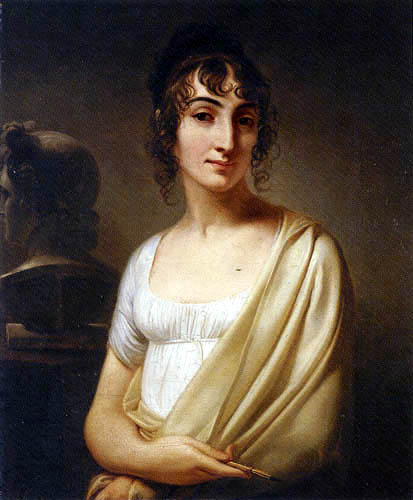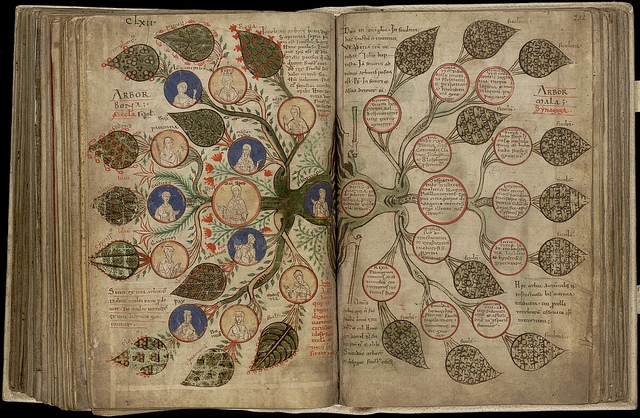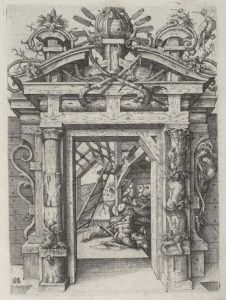by Sandra Gulland | Jun 16, 2013 | Adventures of a Writing Life |

I’ve begun to gallop along on the YA about Hortense. I’m still struggling with the plot, but nonetheless I’ve started falling into scenes, letting them flower. The processes for plotting and writing are different (plotting is so very cerebral), so it’s not a bad idea to do them simultaneously.

Needless-to-say, I’m busy. There is nothing quite like the absorption of the early stages of a novel to make one just a little forgetful.
Recommended this week: “How to shop at a bookstore: an easy 20-step guide for authors.” This is hahahaouch funny & sad. The one thing I would add is that writers give consideration to appearance before going up the the counter and offering to sign a book. If I’m looking somewhat grubby, I will pass.
The article made me nostalgic. I remembered walking by a bookstore just before I was first published, realizing that I would never again go into a bookstore as a carefree-wandering-reader. Once published, there’s a working relationship. A delicious working relationship, but a working relationship nonetheless.
The copy-edit of The Shadow Queen is now back with Doubleday. I always find it surprising how emotionally tangled up I can get over whether a word is capitalized or not.

Now I’ve the beastly Author Questionnaire to finish filling out. The required AQ is perhaps the best reason to stay with one publisher! On the first page (of many pages): list every edition of every book you’ve ever published in all languages. No. No. No.
The catalogue copy of The Shadow Queen for HarperCollins needed some tweaking. (The title was wrong, for starters.) Here’s what we’ve got now for a “shout line”:
A seductive, gripping novel about the lure and illusion of power, and the plight of a woman caught up in the deadly black magic of the woman she loyally serves: the Shadow Queen.
Shout lines are damn hard … Some suggest that you begin writing the shout line at the same time you begin writing the novel.
As usual, I’m reading too many books at once. (A little ADD anyone?) Pride and Prejudice, as well as a book about Jane Austen—as mentioned in my last blog. Tiny Beautiful Things by tell-it-like-it-is Cheryl Strayed. Astonished, by my friend (and fantastic writer) Beverly Donofrio. A historical novel for a blurb—I don’t recall the title, but I’m enjoying it very much. Manage Your Day-to-Day by Jocelyn K Glei, for obvious reasons.
Etc. etc. etc. If only I had five lives.

And … how could I forget! I’m nearing the end of Henderson the Rain King by Saul Bellows. Primal lion screaming! I read that Joni Mitchell was inspired to write “Both Sides Now” reading this amazing novel. I read it in my teens and loved it. Although I found it a little thick in the middle, it still has incredible power.

At the top, a very unusual portrait of Hortense by Appiani. Antique images from BibliOdessy.
SaveSave
by Sandra Gulland | Nov 16, 2012 | Adventures of a Writing Life |

In addition to finishing The Unlikely pilgrimage of Harold Fry by Rachel Joyce—a wonderful novel—I finally worked my way through the Oct. 15 issue of The New Yorker. I have quite a bit to say about Harold, but the NYer must come first: my husband has been waiting for the hand-over.
This was an exceptionally writerly issue. First, a profile of the religious right-wing writer Lynn Vincent, “Lives of the Saints.” Vincent gives a writers’ workshop on “The Sacred ICPID”: an acronym for I couldn’t put it down.
She’s into formulas, and, being a former math major turn novelist, I particularly liked this one: (B+C-I-P)n, which translates: (Butt + Chair – Internet – Phone) times the number of words you can write without breaking a sweat. Her magic number is 350, the number of words she aims to write twice a day. There’s something about that concept that appeals to me. It’s not nearly as intimidating as 1000 words in one go, which is what I aim for when I’m cooking.
And then there was a lengthy profile of the divine Hilary Mantel, “The Dead are Real.” This article, by Larissa MacFarquhar, had quite a bit to say about historical fiction.
“Historical fiction is a hybrid form, halfway between fiction and nonfiction. It is pioneer country, without fixed laws.”
“It has difficulty distinguishing itself from its easy sister the historical romance. It is thought to involve irritating ways of talking, or excessive descriptions of clothes.”
One of the wonderful things about Mantel winning two Bookers—the first for Wolf Hall, and the second for Bring up the Bodies—is that it plants the Historical Fiction flag firmly in the land of Literary.
I am full of admiration for Hilary Mantel’s work. Having read both novels, I’m tempted to read them again in anticipation of the third and final volume. I have heard that she works in an office lined with corkboard, onto which she pins index cards of scenes. I long to know how she manages the depth and freshness of detail that she does. The wit and the humor!
“I like filing systems. But the whole process of writing novels is the opposite of that—it’s do not label, do not define, do not decide, leave everythign loose. You have to say to yourself, I take my hands off, I let my unconscious work for me. It’s desperately uncomfortable!”
She is a writer with a huge brain. “… I know that books can be got onto the page by craft, but the thing that makes a phrase that fizzes on the paper—you always fear that may not be there any longer, because, after all, you did nothing to deserve it.”
Sigh.
At the end of The New Yorker issue was an article on how women became readers: illuminating. I loved this quote from an account of the reception of the novel Pamela by Richardson:
“The blacksmith of the village had got hold of Richardson’s novel of “Pamela, or Virtue Rewarded,” and used to read it aloud on the long summer evenings, seated on his anvil, and never failed to have a large and attentive audience.”
Is that scene not enchanting?

Real-life update: I’m back in San Miguel de Allende now, and most everything is sorted out. (What goes where, etc.) I’ve been working hard on draft 9.0 of In the Service of the Shadow Queen, which I intend to print out tomorrow.
I’ve started a newsletter, which I hope to get out soon: I have Real News! If you’re not on the newsletter mailing list, sign up here.
On Sunday my husband and I will pack for a trip to California to see my soon-to-be-95-year-old dad and the rest of my family for a wonderful U.S. Thanksgiving. Our son is flying out from New York, and our daughter, her mate, her step-daughter and baby flying down from Toronto. There will be twenty-four at the table, and all my dad’s progeny will be there. Thanksgiving, indeed!

by Sandra Gulland | Oct 19, 2012 | Adventures of a Writing Life, The Shadow Queen |
“The Next Big Thing” is a “chain-blog” going around writers on the Net. I got tagged by historical novelist Stephanie Cowell, author of CLAUDE AND CAMILLE. You can see her own blog on The Next Big Thing here.
Ten Interview Questions for the Next Big Thing: What I’m working on now
What is your working title of your book?
IN THE SERVICE OF THE SHADOW QUEEN
Where did the idea come from for the book?
In researching MISTRESS OF THE SUN, I became intrigued by the life of Claude des Oeillets. She was the daughter of a theatrical star and confidential maid to the infamous Madame de Montespan, the Sun King’s “power mistress.” As well, she had a daughter by the King and dealings with Madame Voisin, the “witch” who was burned at the stake.
Basically, I was curious. Claude’s worlds were fascinating: the theater, the Court, the underground world of witchcraft. Too, she had an intimate view of Montespan, an endlessly fascinating and complex villainess.
What genre does your book fall under?
Historical fiction. I like to think I write literary historical fiction, but that is for readers to decide.
Which actors would you choose to play your characters in a movie rendition?
I’ve always thought Nicole Kidman would be fantastic as Madame de Montespan. As for the others … impossible for me to say. I so rarely watch movies.
What is the one-sentence synopsis of your book?
This is the hardest question you could ask a novelist; it is also the most important question to know how to answer. Here’s my attempt:
IN THE SERVICE OF THE SHADOW QUEEN is a historical novel set in 17th century France and based on the life of Claude des Oeillets, who leaves the disreputable make-believe world of the theater for a prestigious position at Court—only to discover that life at Court is itself an illusion, and one that disguises a horrifying sin.
Will your book be self-published or represented by an agency?
I have an agent, and the book will be published in the spring of 2014 by HarperCollins in Canada and Doubleday in the U.S.
How long did it take you to write the first draft of your manuscript?
One year. At least. And I’m working on the 8th and final draft.
What other books would you compare this story to within your genre?
Another difficult question! I’ve been told that my work is similar to that of Tracy Chevallier. A lovely thought, if true.
Who or what inspired you to write this book?
Curiosity about the world of 17th century French theater and my on-going fascination with Madame de Montespan.
I like to write about people who come into the Court world — or theatre world, or underground world — from outside, who view it as a traveller might. This allows us to see it through their eyes, the curious rituals, the details of daily life, the manners. These are the things most of interest to me.
What else about your book might pique the reader’s interest?
I did quite a bit of research into 17th century theater for this novel. I think readers will find it interesting to learn how theater companies were run, how the audiences behaved, how spectacles were performed, and how actors learned their lines … for starters.
In turn, I am tagging two gifted novelists and warmly invite you to visit their sites:
Caroline Leavitt, author of PICTURES OF YOU. You can read about her Next Big Thing here.
Lauren B. Davis, author of the Giller long-listed OUR DAILY BREAD
I’m supposed to tag five authors, in fact, but I’m traveling and it’s difficult. Caroline and Lauren will tag their fair share in turn, I know. If you haven’t read their work, I highly recommend that you do so. Also, be sure to read what their Next Big Thing is. It’s sure to be fantastic!
Message for tagged authors:
Rules of the Next Big Thing
***Use this format for your post
***Answer the ten questions about your current WIP (work in progress)
***Tag five other writers/bloggers and add their links so we can hop over and meet them.
***Include the link of who tagged you and this explanation for the people you have tagged.
***Be sure to line up your five people in advance.
Ten Interview Questions for the Next Big Thing:
What is your working title of your book?
Where did the idea come from for the book?
What genre does your book fall under?
Which actors would you choose to play your characters in a movie rendition?
What is the one-sentence synopsis of your book?
Will your book be self-published or represented by an agency?
How long did it take you to write the first draft of your manuscript?
What other books would you compare this story to within your genre?
Who or what inspired you to write this book?
What else about your book might pique the reader’s interest?
by Sandra Gulland | May 15, 2012 | Adventures of a Writing Life |

I’m very busy right now: the move back to Canada, a final draft of The Next Novel due soon, my Ink e-publishing on the verge of a launch … so my notes here will be sporadic and scattered over the next little while.
Not that I don’t have a great deal to share!
I was struck this morning by an essay written by writer-friend Stephanie Cowell, “The Mystical World of Historical Fiction.” A quote:
To sustain the journey of writing a historical novel requires passionate interest, research, many rewrites, great skill, and the patience of a saint. Lives often do not come with plots; we have to create a plot to take the reader down the path of the story. We have to say, “Come with us. We will show you something wonderful.”
Other articles of interest:
“What Makes a Critic Tick? Connected Authors and the Determinants of Book Reviews.”
An interview with Stephen King: “I never think of stories as made things; I think of them as found things. As if you pull them out of the ground, and you just pick them up.”

The image above is from BibliOdyssey: Wendel Dietterlin’s 1598 work on baroque engravings -‘Architectura von Ausstheilung, Symmetria und Proportion der Fünff Seulen’. It evokes, for me, the revision process: one walks through a “finished” manuscript into a wreckage. One must have faith!
by Sandra Gulland | May 11, 2010 | Adventures of a Writing Life |
.
.
In response to a question on a historical fiction list about forging fiction from little fact (or from differing “facts”), historical author Elizabeth Chadwick posted this wonderful answer:
You do as much background research as you can, both the narrow and the broad, into the person, their lifestyle, and the times in which they lived.
If there’s not a lot available about them, then you research the people who interacted with them ? their lifestyles, and the people who in turn interacted with them.
You dig and then you dig some more. This way you build up the layers in the picture and get a feel for what’s right and what’s not.
… If you do the research in enough depth, your story will have the integrity that does history, you, and the reader justice.
How you utilize your research in the novel is down to your personal skills as a writer. Both story and history need to come alive for the reader and shine. No one can be 100% accurate and as writers our imagination is perhaps the most essential tool in our kit, but integrity matters I think.
If you are writing about someone who actually lived, then you keep as close to their personality as you can and portray their world as it actually was ? or as close as you can get, and that includes attitudes as well as furniture. If your characters are imaginary then the same. That’s my take on it anyway – for what it’s worth :- )
(The emphasis is my own.)
I’m in Paris now, doing research. So much rewriting ahead! As always, I find on-the-ground research essential.
Tumblr: http://sandragulland.tumblr.com/




![]()




